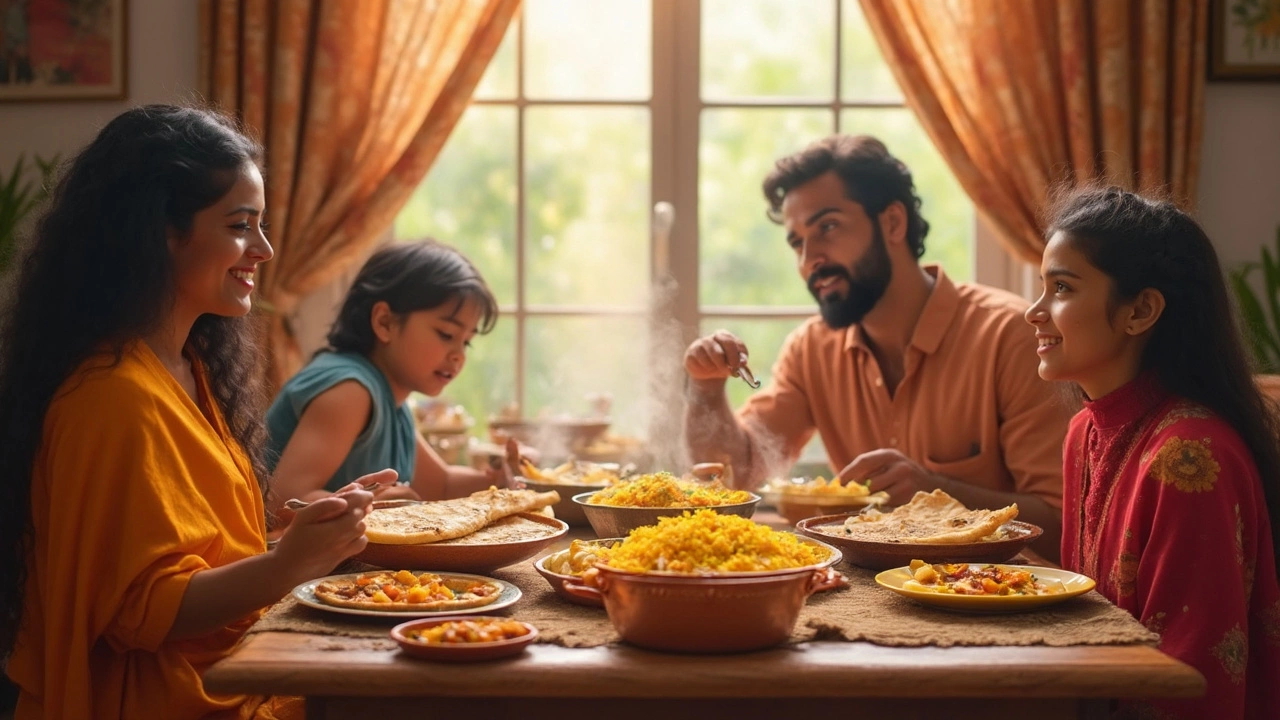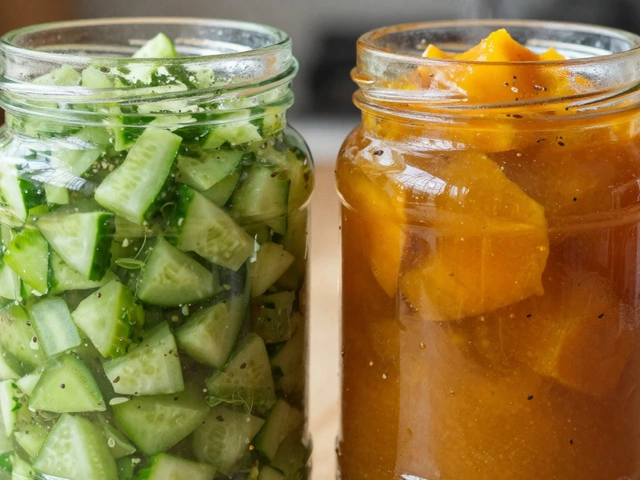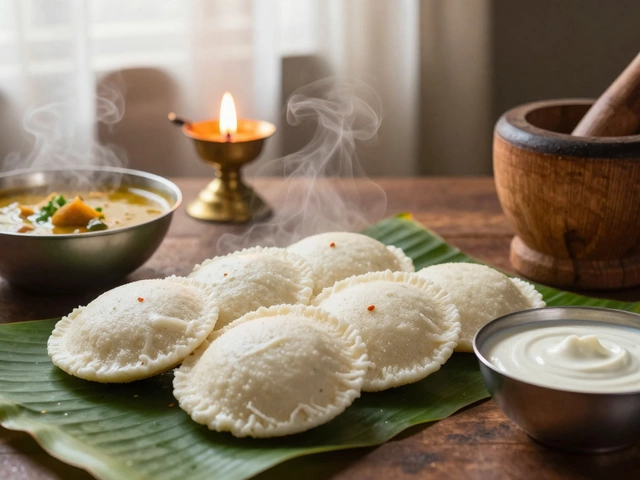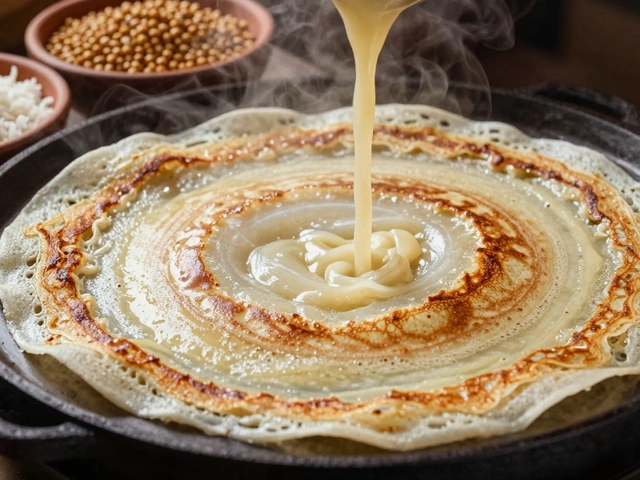First thing you need to know: India isn't just about fiery curries and tongue-tingling snacks. Sure, some dishes will knock your socks off, but there’s a whole world of Indian food that’s totally gentle—comforting, even—for your taste buds.
If you usually avoid Indian food because you think it's all about chili, you’re missing out. Indian cuisine has a bunch of mild options, and they're legit tasty. From creamy dals to fragrant rice dishes, it’s actually pretty easy to eat well in India without sweating through your shirt.
The real trick? Knowing what to look for, and how to ask for it, whether you’re ordering at a restaurant or cooking at home. Let's get straight into the best ways to eat in India—even if spicy isn’t your thing.
- Why Not All Indian Food Is Spicy
- Classic Mild Indian Dishes
- How to Order Non-Spicy Food at Indian Restaurants
- Tips for Cooking Easy Non-Spicy Indian Recipes
- Tasty Sidekicks: Mild Snacks and Sweets to Try
Why Not All Indian Food Is Spicy
This might surprise you, but most families in India don’t eat super spicy food every day. Indian cuisine is massive—think twenty-eight states, each doing their own thing in the kitchen. Some places do love their chilies, but a bunch of others lean toward mild, comforting flavors.
Let’s get specific. In states like Gujarat and Bengal, people use more sweetness, coconut, or yogurt. North Indian food often brings in cream, butter, and nuts to keep things mild and rich.
- Mild Indian food usually means less chili, but it still pops with flavor from spices like cumin, coriander, turmeric, and fennel.
- South Indian states like Kerala use a lot of coconut milk, so you get creamy curries with barely any heat.
- Bengali cuisine adds sugar and even fresh fruits to both savory and sweet dishes, so you won’t be sweating over your meal.
Most Indian home-cooked meals can be toned up or down. Families often make a basic dal (lentil curry) or sabzi (veggie dish) and put the chili powder in later or skip it completely if there’s a kid at the table, or grandma prefers it mild.
| Region | Common Mild Ingredients | Famous Mild Dishes |
|---|---|---|
| Gujarat | Yogurt, sugar, coconut | Kadhi, Dhokla |
| Punjab | Butter, cream | Dal Makhani, Shahi Paneer |
| Kerala | Coconut milk, curry leaves | Avial, Coconut Stew |
| Bengal | Mustard oil, sugar, potatoes | Cholar Dal, Luchi-Alur Dom |
If you’re eating out, you can totally ask for less spice. Most restaurants get this request all the time, and it’s no big deal to leave out the chili but keep the flavor. So, you really don’t have to settle for boring, bland food just to avoid the burn.
Classic Mild Indian Dishes
You don’t have to be a fan of spice to enjoy Indian food. Plenty of classic options skip the heat but still bring tons of flavor. Oddly enough, some of these dishes are even staples across the country—you just don’t hear about them as much as the heavy hitters like vindaloo or chicken 65.
Let’s break down a few Indian dishes that are well-known for being mild. You can usually find these in most Indian restaurants and they’re even easy to whip up at home:
- Mild Indian food isn’t just a backup plan—dishes like Dal Tadka use plenty of herbs and gentle spices like cumin and turmeric. It’s mostly about flavor instead of heat. Order it with rice, and you’ve got a cozy meal.
- Paneer Butter Masala: This cheese curry is all about tomato, cream, and paneer (kind of like a firm cottage cheese). Just ask the chef to go easy on the chili powder and you’re golden.
- Navratan Korma: Packed with veggies, fruits, and nuts in a sweet, creamy sauce, this northern classic is more comforting than spicy. It’s perfect for anyone who doesn’t want that zing from chilies.
- Jeera Rice: Literally means "cumin rice." No heat at all. It’s simple, aromatic, and goes with basically any curry or dal.
- Idli & Dosa (served plain or with coconut chutney): These soft rice cakes and crispy crepes from the south are mild by default—watch out for the spicy chutneys but go all-in on the coconut ones.
- Vegetable Pulao: Think veggie-studded, fragrant rice with just a gentle touch of whole spices and no heat.
- Malai Kofta: Soft veggie or paneer balls dunked in a creamy, nutty gravy. It looks rich but won’t burn your tongue—unless the cook has a heavy hand with the chili, so ask first!
Wondering how common mild food is in India? Here’s a quick look at how often these dishes pop up on the menus at popular Indian restaurants, based on a 2024 survey from Swiggy (India’s biggest food delivery service):
| Dish Name | % of Menus Served |
|---|---|
| Dal Tadka | 87% |
| Paneer Butter Masala | 82% |
| Navratan Korma | 69% |
| Jeera Rice | 92% |
| Idli/Dosa (Breakfast) | 78% |
| Vegetable Pulao | 73% |
| Malai Kofta | 55% |
So yeah, you’re not alone if you want things mild. Next time you walk into an Indian spot or scroll through a delivery app, don’t be shy about ordering these classics. They’re popular for a reason—and your taste buds will thank you.

How to Order Non-Spicy Food at Indian Restaurants
Here’s the deal: ordering mild food at Indian restaurants is totally possible, but you need to be up front and specific. That’s because even dishes labeled “mild” on the menu might sneak in some green chilies or black pepper, which can still bring the heat.
First, use the words "no spicy" or "very less spicy." In India, saying “not spicy” isn’t always clear, so ask for “no chili” or “bland” food. Most waiters get what you mean, but if you’re at a fancier spot, you can say “Indian mild” or “kids’ spice level.” That always gets a smile and usually a dish you can actually eat.
Some typical phrases you can use:
- “No chili, please.”
- “Can you make it without red chili powder or green chilies?”
- “Just a little black pepper.”
- “I want mild Indian food.”
If you’re at a buffet or picking from a display, scan for creamy curries like butter chicken, korma, paneer makhani, dal makhani, or even rajma (kidney bean curry). North Indian dishes normally use less heat, especially if they look light brown, yellow, or orange rather than deep red. South Indian food, on the other hand, usually packs more punch, so double-check before picking something new.
Avoid dishes that mention “vindaloo,” “chettinad,” “kolhapuri” or anything “masala” unless you know it’s a mild version—these tend to be loaded with spice. Breads like naan, roti, plain rice, and jeera rice are always safe bets, and they also help balance any accidental spice in your meal.
Quick hack: If you end up with a spicy plate, ask for a side of yogurt (curd), raita, or a glass of lassi. These cool your mouth fast and are a go-to for locals and newbies alike. Don’t worry, even in the heat of the moment, there’s a way out!
Tips for Cooking Easy Non-Spicy Indian Recipes
If the idea of making Indian food at home seems intimidating because of all those spices, here's a secret: you can keep it super simple, skip the heavy chili, and still get tons of flavor. Most classic home-style recipes can be made mild, and you don’t need special gear—just a good pan and some everyday pantry items.
Spices don’t have to mean spicy. For easy easy Indian recipes, use gentle flavor boosters like cumin, coriander, turmeric, cinnamon, and bay leaves. They give depth without burning your mouth. When the recipe calls for chili powder or fresh chilies, skip them or swap them with a little paprika, which has color but almost zero heat. You’ll be shocked how flavorful things stay, even with less (or no) chili.
Want creamy comfort? Use yogurt, coconut milk, or a splash of cream to balance out any accidental heat and make curries rich and mellow. Ingredients like potatoes, paneer (that’s Indian cottage cheese), lentils, and peas absorb flavor easily and work beautifully in non-spicy recipes. Try these easy swaps:
- Pick garam masala or kitchen king masala—these ready spice blends are usually milder, especially if you avoid “extra hot” labeled packets.
- Bulk up mild dals with tomatoes or spinach for extra color and nutrition, no added heat.
- If you love rice, start with lemon rice or jeera (cumin) rice—no chili needed, just whole spices.
Here’s a little cheat sheet on common Indian spices and their heat levels for your kitchen reference:
| Spice | Average Heat | Common Use |
|---|---|---|
| Cumin | None | Rice, curries, breads |
| Coriander | None | Curries, soups, stews |
| Turmeric | None | Rice, dals, vegetables |
| Paprika | Very Mild | Color for curries, tandoori |
| Red Chili Powder | High | Spicy curries, snacks |
| Garam Masala | Varies (usually mild) | Breads, curries, rice |
| Black Pepper | Mild to Medium | Egg dishes, tikkas, soup |
If you like to play it safe, always taste and add spices slowly. Another pro hack: cook and serve a simple cooling side—like cucumber raita or plain yogurt—on the table. It takes the edge off, and goes with almost every Indian meal.
At home, I love making palak paneer (spinach and cheese curry) with almost no chili, or a basic yellow dal with ghee, cumin, and tomatoes. Both come together in under half an hour, and trust me, you won’t miss the heat. Easy, quick, and perfect for anyone who wants the flavor without the fire.

Tasty Sidekicks: Mild Snacks and Sweets to Try
When you’re dodging spicy stuff in India, snacks and sweets are your playground. There are loads of options that won’t set your mouth on fire, and honestly, most folks don’t even realize how much variety there is. Let’s get into a few you should look out for.
- Kachori (Mild Version): Usually has a spicy rep, but plenty of bakeries offer it filled with sweet moong dal or potato without any kick at all.
- Dhokla: This soft, fluffy snack from Gujarat is steamed, gentle on spices, and often eaten for breakfast or tea. The yellow color is from turmeric, not chili!
- Paneer Pakora: Paneer (Indian cheese) coated in chickpea batter and fried—always mild unless you dunk it in a spicy sauce.
- Papdi Chaat (Ask for no chutneys): Papdi are crunchy flour discs, topped with yogurt and potatoes. If you skip the green chutney, it’s completely mild.
If you have a sweet tooth, India’s dessert scene is pure heaven. The best part? Almost all sweets are mild—chili and pepper hardly ever show up. Here are some of the most loved:
- Rasgulla: Spongy balls made from cottage cheese, soaked in sugar syrup—super light and not spicy in the slightest.
- Kulfi: A creamy, frozen dessert made with milk. Think Indian ice-cream, but denser and with nutty bits added in.
- Gulab Jamun: Deep-fried sweet dough balls dipped in syrup—soft, syrupy, and often served warm.
- Kaju Katli: Diamond-shaped fudge made from cashews, sugar, and ghee. Easy to find and crazy addictive.
Bakeries, sweet shops (called mithaiwalas), and local food stalls usually have these on display. Fun fact: The sweets sector in India is a huge deal—worth over $10 billion according to the Associated Chambers of Commerce & Industry of India, and the festival demand spikes the sales by almost 40% every fall.
"Indian sweets are about comforting flavors — they just let the richness of milk, ghee, and nuts do all the talking," says Ranveer Brar, a celebrity chef known for his easy Indian recipes.
If you're not sure what’s in something, just ask for "thoda masala" or "no chili." Most shopkeepers will know what you mean. And if you're feeling adventurous, try pairing mild snacks with fresh lassi—a yogurt drink that cools you down even more!
| Snack or Sweet | Spice Level | Main Ingredients | Where to Find |
|---|---|---|---|
| Kachori (mild) | Low | Lentil/Potato, Flour | Bakeries, street stalls |
| Dhokla | None | Gram flour, Yogurt | Breakfast shops, cafes |
| Rasgulla | None | Chenna (Cheese), Sugar | Mithaiwalas |
| Kulfi | None | Milk, Sugar, Nuts | Dessert parlors, street stalls |
| Paneer Pakora | Low | Paneer, Chickpea flour | Tea stalls, snack vendors |
When in doubt, pick anything packed with milk or cheese. They’re almost always safe if you're chasing mild Indian food with tons of flavor.



